The Kodak Medalist I and II were two cameras built by the Eastman Kodak Company between the years of 1941 to about 1952. First produced for the American military, very few Medalist I’s were sold commercially to the public. It wasn’t until after World War II when Kodak released the slightly revised Medalist II, did the camera become a (somewhat) common sight on store shelves.
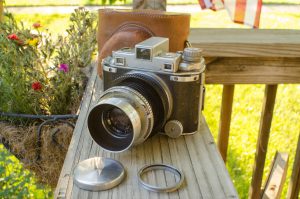
The reason I say “somewhat” is because the camera was very expensive. Selling in 1947 for $312.50 with “ever ready” case, that price when adjusted for inflation is about $3500 today. Despite the Medalist’s long list of accolades, flexible feature set, and excellent lens, sales were likely limited only to professional photographers.
I wrote a full review of my Kodak Medalist I back in 2015 which contains more of the history of the camera and how to use it. If you’re interested in learning more about it, what my thoughts were, and see some sample pics, I recommend you check it out.

In the time since writing that article, the Medalist has cemented itself as one of my favorite cameras in my collection. I’ve taken it out on several occasions shooting everything from family photos, landscapes, even some interior photos. The camera is full of quirks and requires a lot of effort and concentration to use. It’s ergonomics aren’t very good, and it requires effort before loading film since you have to re-spool 120 film onto 620 spools since the camera can’t natively support 120 film.
It seems that not everyone today however, has the same high opinion of the Medalist as I have. My score of 14.6 remains one of the highest I’ve ever given to a camera, and there are many reviewers out there who praise it as highly as I have, yet there are those who have nearly the exact opposite opinion.
A quick survey of other collectors and you get comments like these:
While the Medalist produces excellent images, the cumbersome controls and rangefinder tainted the user experience for me.
It’s an overbuilt beast that seems capable yet complicated and a tad more challenging than your typical 120 cam of the era.
I dislike the ergonomics a lot. It’s a stupid shape, impossible to grip, the viewfinder’s silly small for such a chunky camera and the the shutter release is terrible.
I hate 620 film.
Reviewers complain about the camera’s size, weight and general ergonomics. They say they don’t like the split viewfinder/rangefinder, the camera is difficult to load, and the collapsible lens feels sloppy and imprecise.
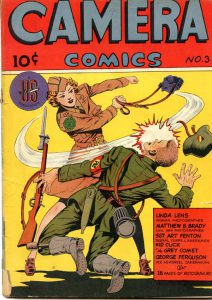
Moving past the complaints, when it comes down to the 5-element Ektar lens and the images it makes, most complaints stop. The Medalist is a spectacular camera, and was designed at a time when the United States was still considered a viable maker of optical goods. Kodak’s advertising at the time utilized the camera’s role in World War II to suggest that this was the camera that helped defeat the Nazis. Although expensive, the Medalist was the darling of the post-war photographic press.
The article below comes from the January 1950 issue of Modern Photography and is a fascinating look at what people were saying about it when it was a current model. The complaints above from present-day collectors have the benefit of over half a century’s worth of other cameras to compare it to. But in 1950, there was nothing else like it and it’s with that “clean slate” mentality that this review should be approached with.
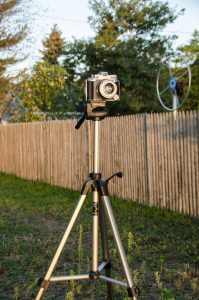
Reviewer Robert Farr touches upon some of the similar sore spots mentioned by modern collectors such as the camera’s heavy size and it’s somewhat awkward controls. On the 9th page, he describes a very unusual recommendation for how to stabilize the camera while hand-holding it. I can say that this was likely more of an issue back then as film speeds were a lot slower than they are today. With modern films with speeds of 200 and higher, you can hand hold the camera using faster shutter speeds so that the need for these strange stabilization techniques aren’t needed.
The article has a few facts that I never knew, such as the proper name of the Medalist’s synthetic, yet supple, leather-like body covering. I got a quick chuckle at the claim that a roll of film can be loaded into the camera in as little as 15 seconds, when it typically takes me a full minute or more to do. I was also impressed with some of the tips given by photographer Muzz Miller for shooting sporting events and outdoor portraits.
Although the article reads more like an instructional manual and offers little in the way of editorializing, I have to believe that readers of the January 1950 issue had to have been mighty impressed with the Medalist’s extensive features, accessories, and praise heaped upon the build quality and the 5-element lens. Amateur photographers likely saw the Medalist in the realm of ‘unobtanium’ as I do today when I read reviews about Hasselblad’s medium format digital cameras or the latest 8K motion picture creation by RED.
Whether you are on Team Medalist or not, a few things everyone can agree on is that the Kodak Medalist was an achievement in the history of American made cameras. It offered a lot of features and technology for the time, had one of the best lenses ever made, and has a design unlike any other camera. Even if you hate the act of using a Kodak Medalist, I am sure any collector would be proud to display one on their shelf.
All scans used with permission by Marc Bergman, 2018.

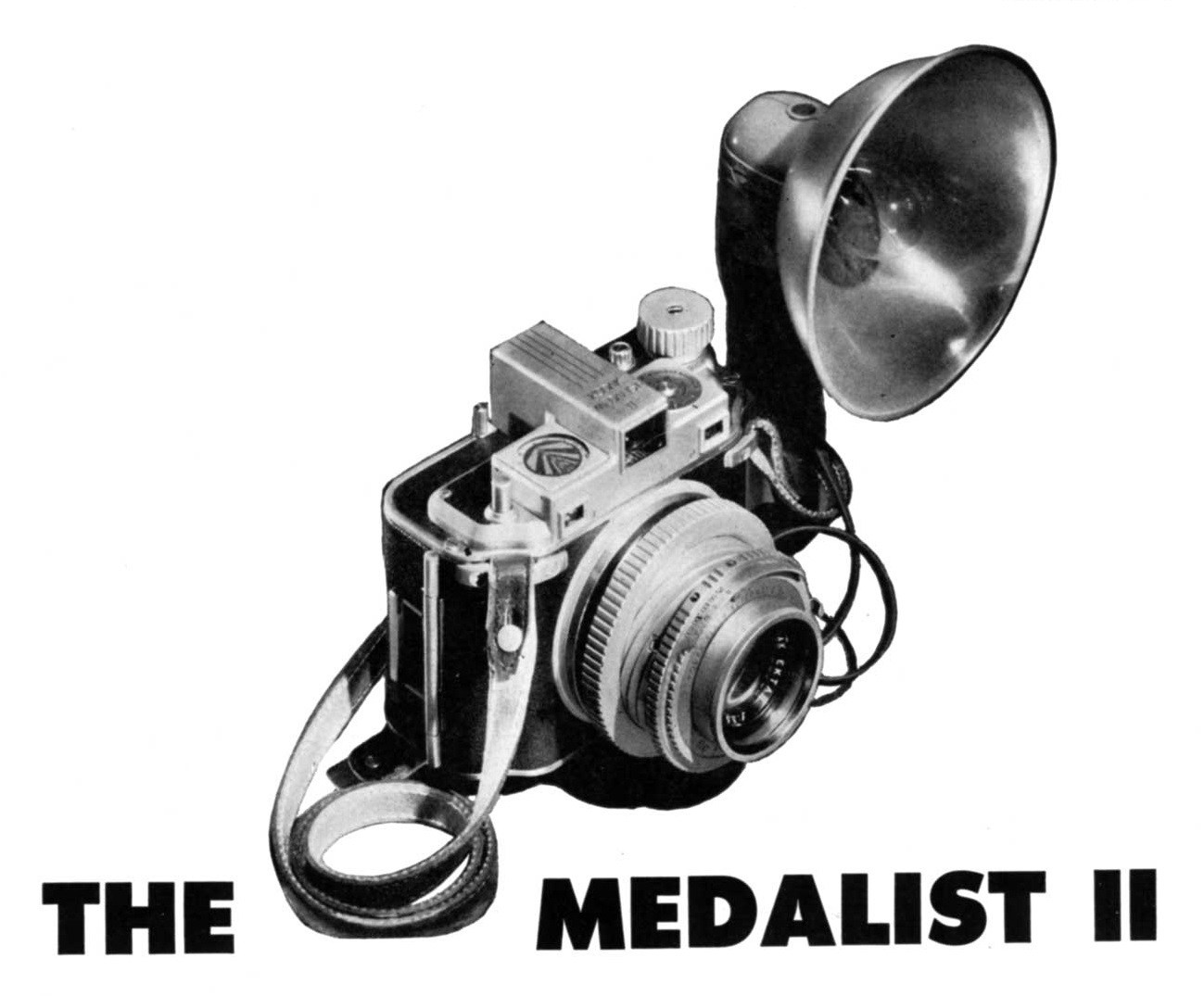
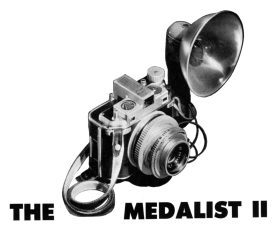










I used two Kodak Medalist II cameras, coupled with Stroboflash II and IV flash units and multiple heads, for wedding photography and group portraits in the 60’s and 70’s. It was, and is, a fine camera. The excellent moderate wide angle 100 mm lens and the large 2 1/4 x 3 1/4 inch negative were an excellent combination for weddings.
I’ve seen many complaints about the weight, which, thanks to the aluminum body, is only about 1425 grams. My Canon 7D, with 17-85 lens, weights more, close to 1520 grams.
The controls are easy to use. Both the shutter speed and the lens diaphragm rings are located together at the front of the camera around the shutter and are highly visible and easy to set, provided you use a fingernail on the top-mounted diaphragm indicator rather than attempt to grasp the ring (all serious Medalist users quickly learn to use their fingernail.)
The large focus ring, located on the helical mount, is a natural fit for the left hand. The lens mount, and camera, are rugged and the ability to retract the lens makes the camera small for transport.
On the top of the body is the large, wheeled, focusing scale, with an excellent depth of field scale, the film frame counter, and the film advance.
On the back of the body is the film window (for setting the first frame location) and on both sides are the film back releases, allowing the back to open from either side or be completely removed.
The eye level finder, with parallax correction, and the focusing window sit on top of the camera. The Medalist is easier to use than many of the cameras of the 50’s, 60’s and 70’s. It has an eye level viewfinder, automatic shutter cocking, and electronic and flash bulb synchronization. It is easy to view and set focus, shutter speed and diagram settings. It handles more like a 35 mm camera than a large format camera.
Admittedly, the separate, small, magnified split image focusing window, located just below the viewfinder, takes some getting used to. After first it can be hard to find, but using it quickly becomes second nature. I prefer it compared to a combined viewfinder/focusing window. The ability to accurately and quickly focus really helped when using a medium format camera for wedding photography.
The right-hand grip is not ergonomically designed, making the camera hard to hold with one hand for either shooting or for carrying. Using both hands, cradling the camera with the left hand on the focusing ring and the right hand on the shutter release, works just fine. When using a flash, a left mounted ‘potato masher’ flash, or a bracket with a left hand grip, is helpful. Using just the right hand to hold the camera, which I often did so I could hand-hold the flash head, does strain the right hand. The Medalist is definitely harder to hold than the new cameras, like my Canon 7D.
Changing film is not that hard, once you do it a few times. It does take some little amount of time to align the first frame with the film window on the back of the camera and then to set the film counter to 1 on the counter on the top. Again, after using the camera a lot, it became second nature to almost know how many turns to turn the film advance before watching for the number one on the film backing, and then to quickly depress and set the top mounted film counter to number one. The Medalist is not as convenient as the cameras that automatically ratchet to the first frame.
Regarding the camera ‘going out of synchronization.’ There is a label inside the camera that says, “DO NOT TURN THIS ROLLER” so I always wondered why this was a problem for some. Over thousands of shots neither of mine went out of synchronization.
There is a lot of slack in the shutter release, which has a long 8 mm travel distance. It does not release the shutter until the last 2 mm. It is easy to feel the dead movement, so Medalist photographers will push the shutter release until they just start to feel resistance, and then press the last 2 mm when they are ready to take the shot. Again, this is a throwback from the mechanical days, and certainly is not the smooth shutter release of the newer electronic cameras.
In the 1960’s Eastman Kodak still serviced the Medalist and, although expensive, I routinely had my two cameras cleaned and serviced. The only failures I experienced were a spring breakage and a Kodak technician misadjustment of the shutter release/film transport release. Although specialized tools specific to the Medalist are required for a complete overhaul, I was able to repair each of these myself. The spring was available from Kodak, and the adjustment of the shutter release/film transport, which is described in the Medalist repair manual, is a relatively simple adjustment. The adjustment screws are accessible by opening the back (no dissassembly required) and can be performed by any competent repair technician in just a few minutes.
I’ve seen a couple of posts regarding the shutter release/film transport so I will stress how important this adjustment is. The shutter release is physically connected to both the film transport and the shutter. The shutter must release simultaneously with the film transport release for proper operation. If the film transport releases first it makes a sound much a a shutter ‘snap’. After the transport releases, the film advancement can be turned to the next frame even though no photo was taken, leaving blank frames on the film. In my case, I had just had the camera overhauled. I checked the Medalist for proper operation on a test roll, which turned fine. I did not notice there were two clicks, first the film transport and then the shutter release. When I went out for my shoot, about half the time I pressed far enough to release the shutter. The other half of the time I pressed just past the film transport release, heard the click, and wound to the next frame, without ever releasing the shutter. Blank frames were left behind.
The flash connection is a ASA bayonet mount, which I liked since they don’t pull out. I used a coiled flash cord and was having difficulty finding these the last few years I used the Medalist. I did buy a Bayonet to PC adapter that I use now.
It is a great camera, but I doubt that I’ll ever do much film shooting in the future. The new cameras and lenses are even better than the Medalist II
Thom, what a great assessment of the Medalist, not only from a modern perspective, but also from someone who regularly used one back when they were new. Although I’ve only recently become a fan of the camera, I have used my Medalist more than most of the 150+ cameras in my collection for many of the same comments you made. It was, and still is, a wonderful camera that not only reminds us of days long ago when American companies made world class products, but also one that was so well designed, that it receives praise from people like myself, today. Thanks for the insight, but I must warn you, if you keep typing long and highly detailed reviews like this one, I may ask you to start writing more reviews for me! 🙂